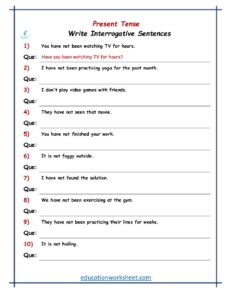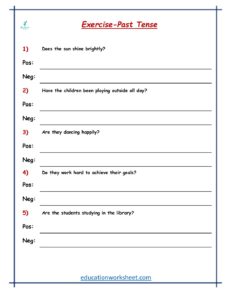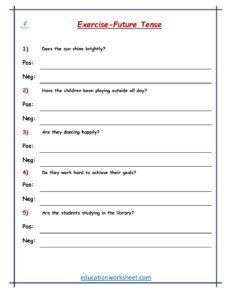Tenses in English Language
Introduction: Deciphering the Time-Space Continuum of Tenses in English Language
Tenses in the English language are used to indicate the time of an action or event. There are three primary Tenses in English Language: past, present, and future. In the vast realm of language, time plays a crucial role in shaping communication. Tenses in English Language, the concept of time is encapsulated within the framework of verb Tenses in English Language. From the simple present to the complex conditional, each Tenses in English Language serves as a linguistic tool to convey the timing of actions, events, and states. This comprehensive guide aims to unravel the intricacies of Tenses in English Language, providing clear explanations, illustrative examples, and practical insights to help learners navigate this temporal maze with confidence and proficiency.
The Pillars of Time Tenses in English Langauge: Present, Past, and Future Tenses
Unveiling the Present
The present tense serves as a snapshot of the current moment, capturing actions or states that are happening right now or are habitual in nature. It lays the foundation for basic communication and is essential for expressing daily routines, facts, and general truths.
Example:
- Simple Present: “She teaches English at the university.”
- Present Continuous: “They are playing football in the park.”
- Present Perfect: “I have visited Paris twice.”

Exploring the Past
The past tense transports us back in time, allowing us to recount events, experiences, and actions that have already occurred. It enables storytelling, historical narration, and reminiscing about the past.
Example:
- Simple Past: “He finished his homework last night.”
- Past Continuous: “She was studying when the power went out.”
- Past Perfect: “They had already eaten dinner when I arrived.”

Anticipating the Future
The future tense propels us forward, enabling us to express plans, predictions, and intentions that have yet to unfold. It helps us navigate uncertainties and envision possibilities yet to be realized.
Example:
- Simple Future: “She will graduate next year.”
- Future Continuous: “They will be waiting for you at the airport.”
- Future Perfect: “By the time you arrive, they will have left.”

Delving Deeper Tenses in English Language: Perfect and Continuous Aspects
Perfecting the Present
The perfect aspect adds depth to our understanding of timing Tenses in English Language by indicating actions or states that are completed or have relevance to the present moment. It often involves a connection between past events and their current consequences.
Example:
- Present Perfect: “I have lived here for ten years.”
- Present Perfect Continuous: “She has been studying English for two hours.”
Embracing Continuity
The continuous aspect highlights actions or states that are ongoing or in progress at a specific point in time. It emphasizes duration, persistence, and the temporary nature of an activity.
Example:
- Past Continuous: “He was watching TV when I called.”
- Future Continuous: “They will be working on the project all day.”
Unlocking Advanced Constructs: Perfect Continuous, Conditional, and Subjunctive Forms
Perfecting the Past
The perfect continuous combines the notions of completion and continuity, indicating actions that started in the past and have continued up to the present or have relevance to it.
Example:
- Past Perfect Continuous: “She had been waiting for hours before the bus finally arrived.”
Contemplating Conditions
Conditional forms express hypothetical situations, contingent upon certain conditions or circumstances. They allow us to speculate, make predictions, or express unreal or imaginary scenarios.
Example:
- Zero Conditional: “If you heat ice, it melts.”
- First Conditional: “If it rains, we will stay indoors.”
- Second Conditional: “If I were rich, I would travel the world.”
- Third Conditional: “If he had studied harder, he would have passed the exam.”
Entering the Realm of Subjunctive
The subjunctive mood conveys desires, recommendations, wishes, or hypothetical situations that may or may not be fulfilled. It is often used in formal or literary contexts to express politeness, obligation, or uncertainty.
Example:
- Present Subjunctive: “It’s essential that she be present at the meeting.”
- Past Subjunctive: “I wish he were here with us.”
Explanation Tenses in English Language
- Simple Tenses: These are the basic forms of the verb, indicating a simple action or state of being.
- Past Simple: Used to describe actions or states that happened in the past.
- Present Simple: Used to describe habitual actions, general truths, or facts.
- Future Simple: Used to describe actions or states that will happen in the future.
- Continuous (Progressive) Tense: These indicate actions that are ongoing or happening at a specific moment in time.
- Past Continuous: Describes an action that was ongoing in the past at a specific time or during another action.
- Present Continuous: Describes an action that is currently happening at the moment of speaking.
- Future Continuous: Describes an action that will be ongoing in the future at a specific time or during another action.
- Perfect Tenses: These indicate actions that have been completed before a certain time or are relevant to a specific point in time.
- Past Perfect: Describes an action that was completed before another action or a specific time in the past.
- Present Perfect: Describes an action that started in the past and continues into the present, or whose effects are still felt in the present.
- Future Perfect: Describes an action that will be completed before a specific time or another action in the future.
- Perfect Continuous Tenses: These indicate actions that started in the past, continue into the present (or will continue into the future), and have a duration.
- Past Perfect Continuous: Describes an action that started in the past, continued for some time, and was still ongoing before another action or a specific time in the past.
- Present Perfect Continuous: Describes an action that started in the past, continues into the present, and may continue into the future, emphasizing its duration.
- Future Perfect Continuous: Describes an action that will start in the future, continue for a duration, and be ongoing before a specific time or another action in the future.
Mastering the Temporal Tapestry of English Verbs
In conclusion, the journey through Tenses in English Language is akin to navigating a rich tapestry of time and expression. Each tense, with its unique characteristics and functions, contributes to the richness and complexity of the language. By understanding and mastering these Tenses in English Language, learners can unlock a world of possibilities in both spoken and written communication, enhancing their ability to express themselves with clarity, precision, and sophistication.

